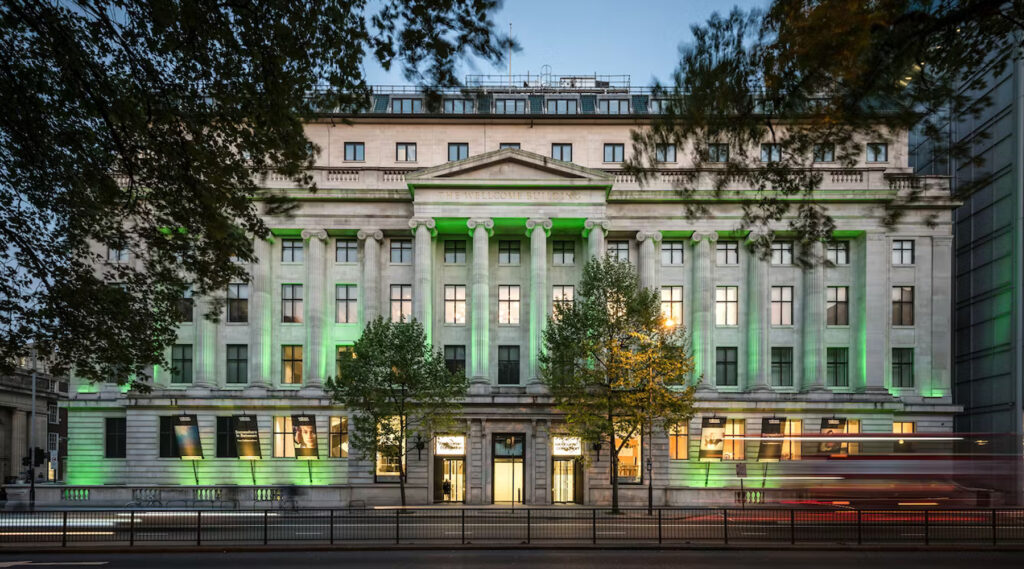The large Wellcome Collection in Euston may need to move to a new location, as it investigates the cost of upgrading their current buildings to become climate neutral.

Wellcome Collection building lit up in green in support of Mental Health Awareness Week, Thomas SG Farnetti. Source: Wellcome Collection.
The Wellcome Trust, the medical charity that runs the public venue and its own offices next door has set itself a target of reaching net zero for its UK scope 1 and 2 emissions by 2030. Scope 1 emissions cover CO2 emitted by the Wellcome Trust itself, such as heating its buildings, while scope 2 emissions come from services it purchases, such as electricity.
Although relatively modern in appearance inside, the organisation says that the buildings both present significant decarbonisation challenges and has commissioned a detailed survey to determine what needs to be done to make them fully sustainable.
However, while the survey is looking at how to make their buildings carbon neutral, they will also look at the possibility of moving the entire estate to a new location elsewhere if that turns out to be the better option.
At the moment, the estate is effectively split into two buildings that sit beside each other.
The older building, which is today the public venue, opened in 1932 as the Wellcome Institute, with offices and research labs. In 2004, they moved next door into a new modern building, and the older Insitute was converted into a public museum and library, opening in 2007.
Interestingly, the older building looks grand from the outside, but is a fairly routine steel structure office block and isn’t listed, so heritage protection would be less of an impediment to major works if that is the route they choose to go down.
There are no more details at the moment, and the exploratory work will continue for the rest of this year before making recommendations next year.
The goal is for the buildings to be carbon neutral by 2030, so if they are moving, it’s likely that they’ll have to make a decision by 2025 simply because of the time it takes for planning a move or building works and to get started on the upgrades.
Until Wellcome reaches its net zero target for scope 1 and 2, it says it will offset these emissions through the Woodland Trust’s Woodland Carbon offsetting scheme.







So what will happen to the “heritage” building when Wellcome moves out? Will it be taken over by another organisation that doesn’t care about being CO2 neutral? Or just knocked down – and replaced by another that will, unless it’s extremely unusual, create a lot of carbon emissions to build? I hope they manage to work out how to make a heritage building energy efficient as a lot of people are watching, such as the millions of Londoners living in Victorian and older homes.
If they move out, not when – and you will need to wait until several years after the decision about if they want to move out is made to find out.
Agreed. If they move, it might look good on their green scorecard, but it won’t reduce the carbon intensity of the existing buildings.